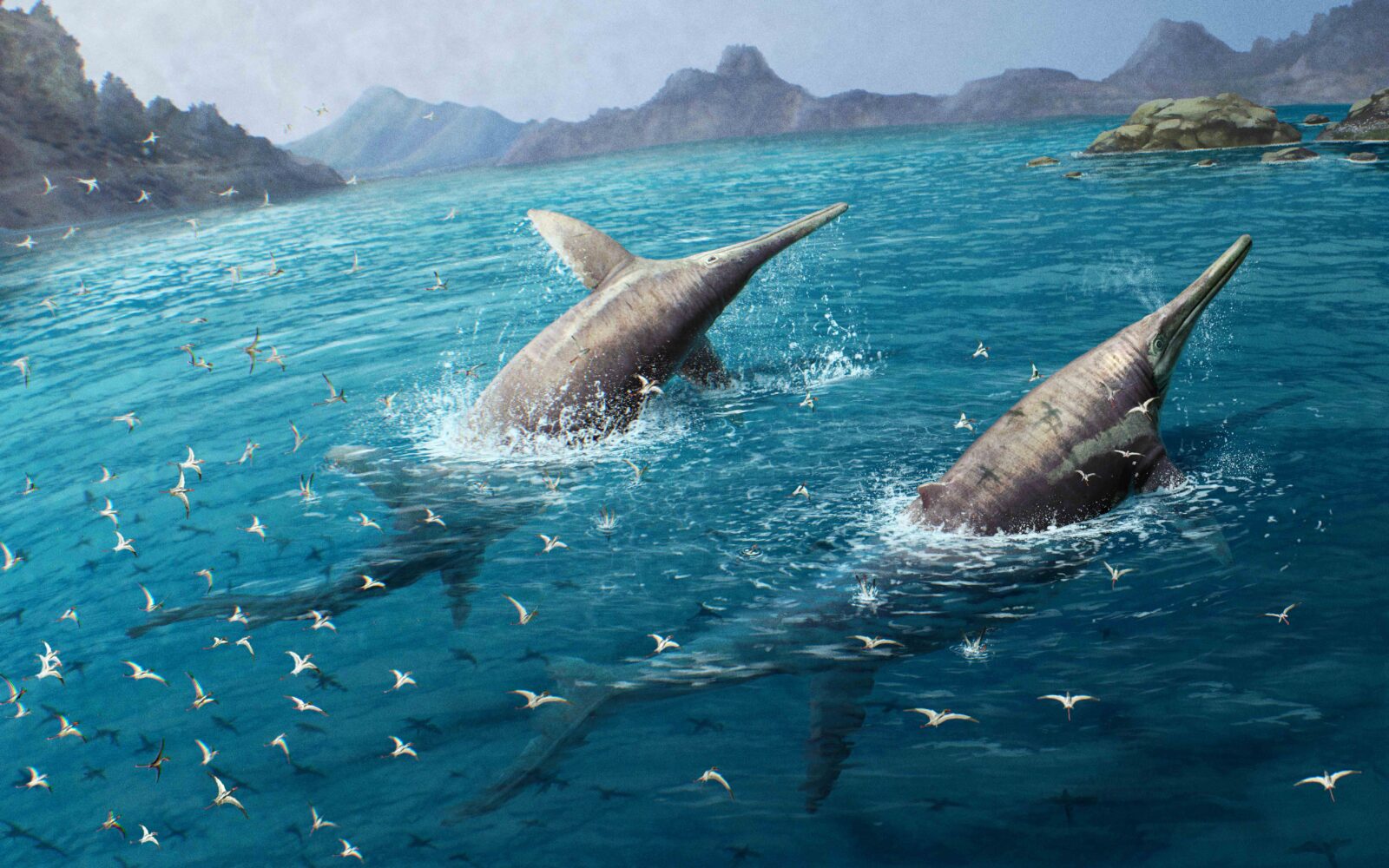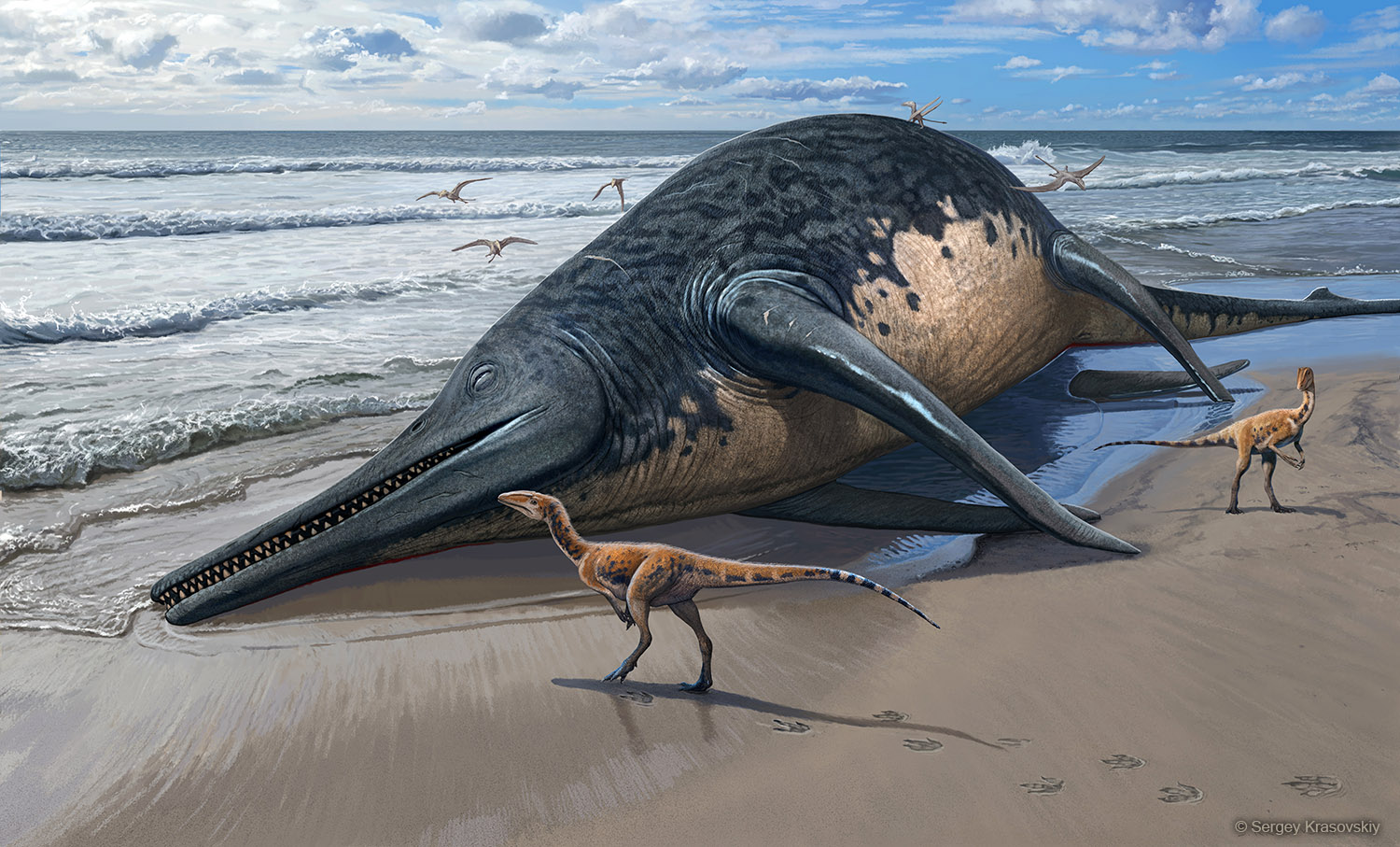News
Manchester palaeontologist unearths bones of what may be the largest known marine reptile
This is a HUGE deal.
A Manchester-based palaeontologist has unearthed the bones of what may be the largest known marine reptile.
This new identification is a crucial part of a fascinating eight-year long discovery journey.
It all started when a seasoned fossil collector named Paul de la Salle found a giant jawbone on Lilstock Beach, near Bridgewater in Somerset, back in May 2016, and then father and daughter, Justin and Ruby Reynolds from Devon, found the first pieces of a second jawbone and another giant bone while searching for fossils on the beach at Blue Anchor, also in Somerset, in May 2020.
And now, a palaeontologist at the University of Manchester (UoM) Dr Dean Lomax, has identified the fossilised remains of the second gigantic jawbone that measures more than two metres long.
Experts have identified these bones as belonging to the jaws of a new species of enormous ichthyosaur – which is a type of prehistoric marine reptile – and astonishing estimations suggest the oceanic titan would have been more than 25-metres long.
Dr Lomax has been working together with Justin and Ruby Reynolds, along with Paul de la Salle and several family members, since the father-daughter duo first contacted them about their groundbreaking discovery in 2020.


“I was amazed by Justin and Ruby’s find,” Dr Lomax commented.
“In 2018, my team and Paul de la Salle studied and described Paul’s giant jawbone, and we had hoped that one day another would come to light.”
He explained that Justin and Ruby’s new specimen was “more complete and better preserved” than the first find, and that he “became very excited” at the chance to learn more following their discovery.
As mentioned, the Manchester-based research team, led by Dr Lomax, revealed that the jaw bones belong to a new species of giant ichthyosaur that would’ve been about the size of a blue whale, and they have called the new genus and species Ichthyotitan severnensis – which means ‘giant fish lizard of the Severn’.
The bones – which represent the very last of their kind – are around 202 million years old, and date back to the end of the Triassic Period in a time known as the Rhaetian.
During this time, the gigantic ichthyosaurs swam the seas while the dinosaurs walked on land.

Ichthyotitan is not the world’s first giant ichthyosaur, but the discoveries by Paul, and Justin and Ruby, are said to be “unique among those known to science”, as they appear roughly 13 million years after their latest geologic relatives – including Shonisaurus sikanniensis from British Columbia in Canada, and Himalayasaurus tibetensis from Tibet in China.
Speaking on the confirmation of the bones’ identification this week, Dr Lomax said: “This research has been ongoing for almost eight years.
“It is quite remarkable to think that gigantic, blue whale-sized ichthyosaurs were swimming in the oceans around what was the UK during the Triassic Period.
Read more:
- ‘Fascinating’ Victorian corn mill foundations unearthed during Rochdale archaeological dig
- University of Manchester to host FREE festival with 150+ ‘immersive’ events to celebrate its 200th year
- Manchester archaeologists carry out dig at 5,000-year-old tomb linked to King Arthur
“These jawbones provide tantalising evidence that perhaps one day a complete skull or skeleton of one of these giants might be found.”
Featured Image – UoM





























